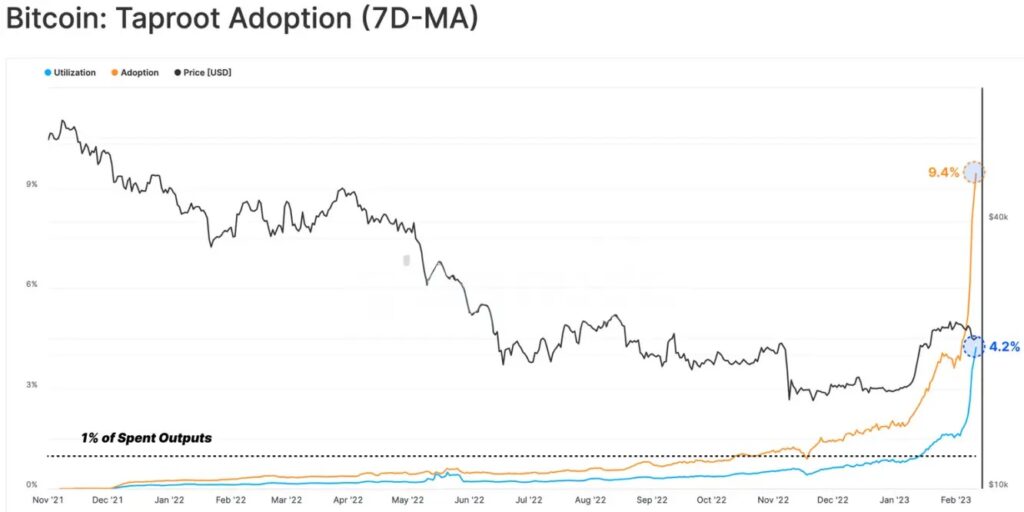Bitcoin Ordinals market has seen remarkable growth since its introduction in 2023, changing how Bitcoin’s smallest units are perceived and traded. Since its initial release in 2009, Bitcoin has gone from a specialized digital currency to the cryptocurrency most often used for transactions worldwide. Despite this, there has been significant ground-breaking innovation during this journey. The introduction of Bitcoin Ordinals in 2023, a critical turning point for the network, is considered one of the most important milestones in Bitcoin’s history.
Bitcoin Ordinals
Cryptocurrency ordinals are Bitcoin’s answer to the rising popularity of NFTs. These digital assets let users write unique information on each satoshi, Bitcoin’s smallest unit. This makes satoshis non-fungible and valuable. Casey Rodarmor, a Bitcoin worker, came up with the idea of Bitcoin Ordinals by using the features of Bitcoin’s 2021 Taproot update, which lets data be added straight to the blockchain. Bitcoin Ordinals give users a way to identify each satoshi uniquely. This could be important for history or be a digital treasure.
Bitcoin Ordinals Work
The fundamental premise of Bitcoin Ordinals is the assignment of a unique number to each satoshi upon its formation. This fundamental procedure is the foundation upon which Bitcoin Ordinals are built. When we form a Bitcoin, we assign its one million satoshi a number based on the order of their creation. This happens each time we create a new Bitcoin. This determines the unique identifier for each Bitcoin. This factor ultimately determines the total satoshi production amount.

Because users can maintain satoshis individually for each wallet they use, they have a wider variety of alternatives. Regarding Ethereum, non-fungible tokens, sometimes referred to as NFTs, often rely on information held in a different location. On the other hand, Bitcoin Ordinals save all their information on the blockchain, making the ownership record more secure and preventing it from being lost for longer. This capability will not be available in any other cryptocurrency you use.
Buying and Selling Bitcoin Ordinals
Users must own a Bitcoin wallet appropriate for use with Bitcoin Ordinals—often one compatible with Taproot addresses. It is ideal to use wallets such as the Sparrow Wallet. Following the creation of a wallet, users can browse for available Ordinals on websites such as OpenOrdex and Ordinals Market. Like the Ethereum non-fungible token (NFT) sector, users can purchase transactions directly or through an auction.
Bitcoin Ordinals Growth
Bitcoin Ordinals can represent digital assets, art, historic site preservation, and censorship-resistant communications. Like the early days of Ethereum’s non-fungible tokens, the market primarily focuses on art. Over 170 million dollars in sales were reported by March 2024, indicating that the market for Bitcoin Ordinals, which is still in its early stages of development, has already seen remarkable growth.
Related: Strategic Bitcoin Investment for National Reserve Plans in 2024
Conclusion
Despite some challenges, the Bitcoin network and its users have made significant progress with Bitcoin Ordinals. Suppose the market for Bitcoin Ordinals continues to expand and develop. This could change how individuals engage with digital assets stored on the Bitcoin blockchain. This transition might be particularly significant if the market continues to grow and develop.
Because of the innovation that Bitcoin Ordinals has brought about, the ecosystem has been continually adapting and expanding, which has positioned Bitcoin as a dominant player in digital assets. Bitcoin Ordinals is responsible for this. Bitcoin Ordinals is responsible for creating this idea, even though there are still questions over its functionality.

